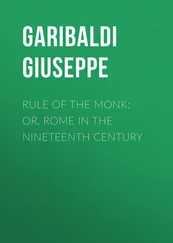Jules Verne - Celebrated Travels and Travellers, Part 3. The Great Explorers of the Nineteenth Century
Здесь есть возможность читать онлайн «Jules Verne - Celebrated Travels and Travellers, Part 3. The Great Explorers of the Nineteenth Century» — ознакомительный отрывок электронной книги совершенно бесплатно, а после прочтения отрывка купить полную версию. В некоторых случаях можно слушать аудио, скачать через торрент в формате fb2 и присутствует краткое содержание. Жанр: foreign_language, foreign_prose, на английском языке. Описание произведения, (предисловие) а так же отзывы посетителей доступны на портале библиотеки ЛибКат.
- Название:Celebrated Travels and Travellers, Part 3. The Great Explorers of the Nineteenth Century
- Автор:
- Жанр:
- Год:неизвестен
- ISBN:нет данных
- Рейтинг книги:5 / 5. Голосов: 1
-
Избранное:Добавить в избранное
- Отзывы:
-
Ваша оценка:
- 100
- 1
- 2
- 3
- 4
- 5
Celebrated Travels and Travellers, Part 3. The Great Explorers of the Nineteenth Century: краткое содержание, описание и аннотация
Предлагаем к чтению аннотацию, описание, краткое содержание или предисловие (зависит от того, что написал сам автор книги «Celebrated Travels and Travellers, Part 3. The Great Explorers of the Nineteenth Century»). Если вы не нашли необходимую информацию о книге — напишите в комментариях, мы постараемся отыскать её.
Celebrated Travels and Travellers, Part 3. The Great Explorers of the Nineteenth Century — читать онлайн ознакомительный отрывок
Ниже представлен текст книги, разбитый по страницам. Система сохранения места последней прочитанной страницы, позволяет с удобством читать онлайн бесплатно книгу «Celebrated Travels and Travellers, Part 3. The Great Explorers of the Nineteenth Century», без необходимости каждый раз заново искать на чём Вы остановились. Поставьте закладку, и сможете в любой момент перейти на страницу, на которой закончили чтение.
Интервал:
Закладка:
The inhabitants, who are called Hadendoa, are treacherous, dishonest, and bloodthirsty; and their women are almost as degraded as those of Shendy and Berber.
Upon leaving Taka, the road to Suakin and the shores of the Red Sea lay over a chain of chalk hills. At Schenterab granite is found. The hills presented few difficulties, and the caravan reached Suakin in safety upon the 26th May. But Burckhardt's troubles were not yet at an end. The Emir and Aga combined to plunder him, and treated him as the lowest of slaves, until he produced the firman which he had received from Mehemet Ali and Ibrahim Pasha. This changed the face of affairs. Instead of being thrown into prison the traveller was invited to the Aga's, who offered him a present of a young slave. M. Vivien de Saint Martin writes of this expedition, "This journey of from twenty to twenty-five days, between the Nile and the Red Sea, was the first ever undertaken by a European. The observations collected, as to the settled or nomad tribes of these districts are invaluable for Europe. Burckhardt's narrative is of increasing interest, and few can compare with it for instruction and interest."
Upon the 7th of July Burckhardt succeeded in embarking in a boat, and eleven days later he reached Jeddah, which serves as a harbour to Mecca. Jeddah is built upon the sea-shore, and is surrounded by a wall, which, insufficient as it would be against artillery, protects it perfectly from the attacks of the Wahabees, who have been nicknamed the "Puritans of Islamism." These people are a distinct sect, who claim to restore Mahomedanism to its primitive simplicity.
"The entrance to the town, upon the side nearest the sea," says Burckhardt, "is protected by a battery which overlooks the entire fort, and is surmounted by one enormous piece of artillery capable of discharging a five-hundred pound shot, which is so renowned throughout the Arabian Gulf, that its reputation alone is enough to protect Jeddah."
The greatest drawback to this city is its want of fresh water, which is brought from small wells two miles distant. Without gardens, vegetables, or date-trees, Jeddah, in spite of its population of twelve or fifteen thousand (a number which is doubled in the pilgrimage season) presents a strange appearance. The population is the reverse of autochthonous; it is composed of natives of Hadramaut and Yemen, Indians from Surat and Bombay, and Malays who come as pilgrims and settle in the town. Burckhardt introduces many anecdotes of interest into his account of the manners, mode of living, price of commodities, and number of traders in the place.
Speaking of the singular customs of the natives of Jeddah, he says: – "It is the almost universal custom for everybody to swallow a cup full of ghee or melted butter in the morning. After this they take coffee, which they regard as a strong tonic; and they are so accustomed to this habit from their earliest years, that they feel greatly inconvenienced if they discontinue it. The higher classes are satisfied with drinking the cup of butter, but the lower classes add another half cup, which they draw up through the nostrils, imagining that they thus prevent bad air entering the body by those apertures."
The traveller left Jeddah for Tayf on the 24th of August. The road winds over mountains and across valleys of romantic beauty and luxuriant verdure. Burckhardt was taken for an English spy at Tayf, and, although he was well received by the Pasha, he had no liberty, and could not carry on his observations.
Tayf, it appears, is famous for the beauty of its gardens; roses and grapes are sent from it into all the districts of Hedjaz. This town had a considerable trade, and was very prosperous before it was plundered by the Wahabees.
The surveillance to which he was subjected hastened Burckhardt's departure, and upon the 7th of September he started for Mecca. Well versed in the study of the Koran, and acquainted with all the practices of Islamism, he was prepared to act the part of a pilgrim. His first care was to dress himself in accordance with the law prescribed for the faithful who enter Mecca – in the "ihram," or pieces of cloth without seam, one covering the loins, the other thrown over the neck and shoulders. The pilgrim's first duty is to proceed to the temple, without waiting even to procure a lodging. This Burckhardt did not fail to do, observing at the same time the rites and ceremonies prescribed in such cases, of which he gives many interesting particulars; we cannot, however, dwell upon them here.
"Mecca," says Burckhardt, "may be called a pretty town. As a rule, the streets are wider than in most Eastern cities. The houses are lofty and built of stone; and its numerous windows, opening upon the street, give it a more cheerful and European aspect than the cities of Egypt or Syria, whose dwellings generally have few windows on the outside. Every house has a terrace built of stone, and sloping in such a way as to allow water to run down the gutters into the street. Low walls with parapets conceal these terraces; for, as everywhere else in the East, it is not thought right for a man to appear there; he would be accused of spying upon the women, who spend much of their time upon the terrace of the house, engaged in domestic work, drying corn, hanging out linen, &c."
The only public place in the city is the large court of the Grand Mosque. Trees are rare; not a garden enlivens the view, and the scene depends for animation upon the well-stocked shops which abound during the pilgrimage. With the exception of four or five large houses belonging to the administration, two colleges, which have since been converted into warehouses for corn, and the mosque with the few buildings and colleges connected with it, Mecca can boast of no public buildings, and cannot compete in this respect with other cities in the East of the same size.
The streets are unpaved; and as drains are unknown, water collects in puddles, and the accumulation of mud is inconceivable. For a water supply the natives trust to heaven, catching the rain in cisterns, for that obtained from the wells is so foul that it is impossible to drink it.
In the centre of the town, where the valley widens a little, the mosque known as Beithóu'llah, or El Haram, is situated. This edifice owes its fame to the Kaaba which is enclosed in it, for other Eastern towns can boast of mosques equally large and more beautiful. El Haram is situated in an oblong space, surrounded on the eastern side by a quadruple colonnade, and by a triple one on the other. The columns are connected by pointed arches, upon each four stand little domes constructed of mortar and whitened outside. Some of these columns are of white marble, granite, or porphyry, but the greater part are of the common stone found among the mountains of Mecca.
The Kaaba has been so often ruined and restored that no trace of a remote antiquity remains. It was in existence before this mosque was built.
The traveller says, "The Kaaba is placed upon an inclined base some two feet high, and its roof being flat, it presents the appearance at a little distance of a perfect cube. The only door by which it can be entered, and which is opened two or three times a year, is on the north side, about seven feet above the ground, for which reason one cannot enter except by means of a wooden staircase. The famous 'black stone' is enshrined at the north-eastern corner of the Kaaba, near the door, and forms one of the angles of the building four or five feet above the floor of the court. It is difficult to ascertain the exact nature of this stone, as its surface has been completely worn and reduced to its present condition by the kisses and worshipping touches bestowed upon it by countless millions of pilgrims. The Kaaba is entirely covered with black silk, which envelopes its sides, leaving the roof exposed. This veil or curtain is called 'the Kesoua,' and is renewed yearly during the pilgrimage. It is brought from Cairo, where it is manufactured at the expense of the Viceroy."
Читать дальшеИнтервал:
Закладка:
Похожие книги на «Celebrated Travels and Travellers, Part 3. The Great Explorers of the Nineteenth Century»
Представляем Вашему вниманию похожие книги на «Celebrated Travels and Travellers, Part 3. The Great Explorers of the Nineteenth Century» списком для выбора. Мы отобрали схожую по названию и смыслу литературу в надежде предоставить читателям больше вариантов отыскать новые, интересные, ещё непрочитанные произведения.
Обсуждение, отзывы о книге «Celebrated Travels and Travellers, Part 3. The Great Explorers of the Nineteenth Century» и просто собственные мнения читателей. Оставьте ваши комментарии, напишите, что Вы думаете о произведении, его смысле или главных героях. Укажите что конкретно понравилось, а что нет, и почему Вы так считаете.












